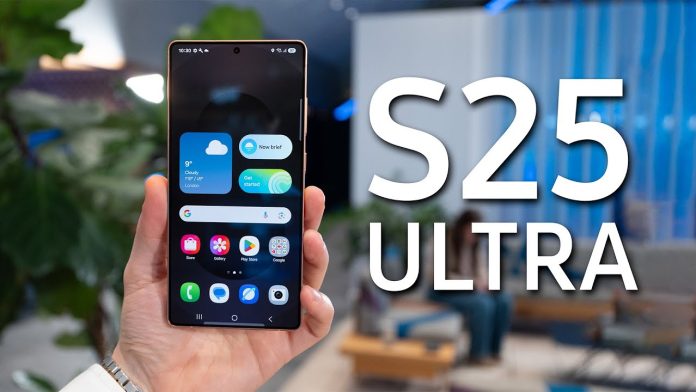Samsung’s latest flagship phone ” Samsung Galaxy S25 Ultra ” has come, but it is hardly the boost that many of us had hoped for. In fact, at first look, nothing appears to have changed. Thankfully, that is not the case, and there are a few new things to try.
The design has been revised, and the corners now have a slight curvature, which should be more comfortable on your palms. There’s the most recent Qualcomm chip, which is a unique “For Galaxy” version, as we’ve come to expect. There’s also a new 50Mp ultrawide camera, but that’s all the gear you’ll get.
The remaining advancements come in the form of software, which is heavily integrated with AI intelligence. There are several pretty interesting features included, but I expect many of them to be available on Samsung’s earlier flagships as well.
Is it worth buying in the new Samsung Galaxy S25 Ultra, or should you stick with a previous model? I spent the past week using the S25 Ultra as my primary device in an attempt to find out.
Design & Build
- Boxy design with curved corners
- 218g, Corning Gorilla Armor 2
- IP68 rated
The Galaxy S25 Ultra has received a design upgrade this year, albeit it takes more than a casual glance to notice. It retains its classic form and camera arrangement from previous generations.

The biggest noticeable difference is that the corners are slightly more rounded, so they won’t poke your palms as much as the S24 Ultra did. However, the curve is still significantly sharper than the rest of the S25 family, which I believe is a sensible approach because it ensures the phone retains the characteristic boxy shape of its predecessors.
The rear cameras now have a thicker black bezel surrounding each lens, much to the cameras on the Z Fold 6. It’s merely an aesthetic choice, but I really like it; it seems almost cartoonish.
The side rails are now entirely flat all around, like the other S25 models, and this model remains the only one with a titanium alloy frame. The S Pen remains in its customary position, and the buttons are essentially intact.
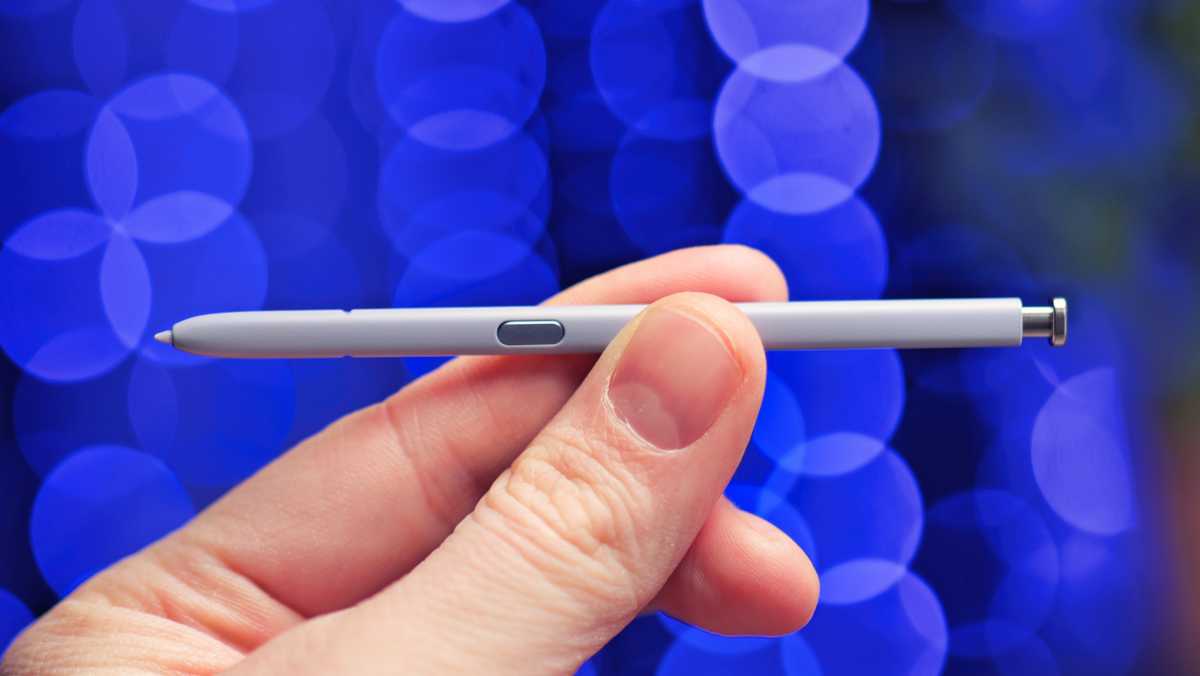
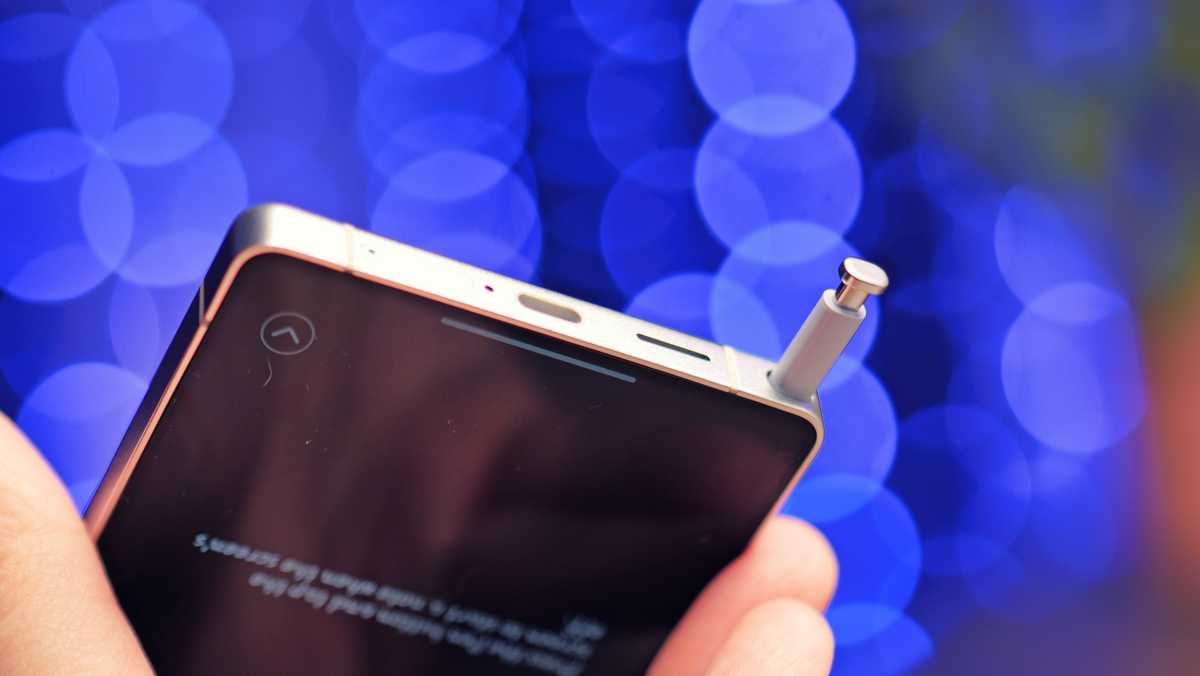
Eagle-eyed Samsung fans instantly noticed a difference with the S Pen: it no longer supports Bluetooth. Writing and sketching continue to work as before, however it can no longer be used as a remote camera shutter, which is unfortunate.
I’m a little perplexed by this downgrade; it’s probably simply a cost-cutting move, but at least you still get a S Pen. I have concerns that the individuals who use it are in the minority, so I’m always relieved to learn that it hasn’t been completely deleted.
Phones are trending larger and heavier every year, so the weight reduction on the S25 Ultra is a welcome one
The S25 Ultra weighs about 15g less than its predecessor and is a fraction of a millimetre smaller. In actuality, you’re unlikely to detect the difference unless you have a precise set of calipers on hand. However, phones are becoming increasingly larger and heavier with each passing year, so the S25 Ultra’s weight reduction is welcome.

I was given the Titanium SilverBlue colorway for testing, although the phone is also available in Black, Grey, and WhiteSilver. To be honest, other from the black one, I have difficulties identifying them apart because they’re all so similar. On the plus side, they all seem polished and professional, making it difficult to make a mistake with your color selection.
If you purchase the phone via Samsung’s website, you will have access to the special JadeGreen, PinkGold, and JetBlack editions. These offer a bit more personality than the standard alternatives and may be the way to go if you want to stand out.
Screen & Speakers
- 6.9-inch 120Hz 1440 x 3120 AMOLED
- 2600 nits peak brightness
- Stereo speakers
The Galaxy S25 Ultra screen has nearly identical characteristics to the S24 Ultra, which isn’t a terrible thing. The S24 Ultra already had one of my favourite screens, and this one is a little better.
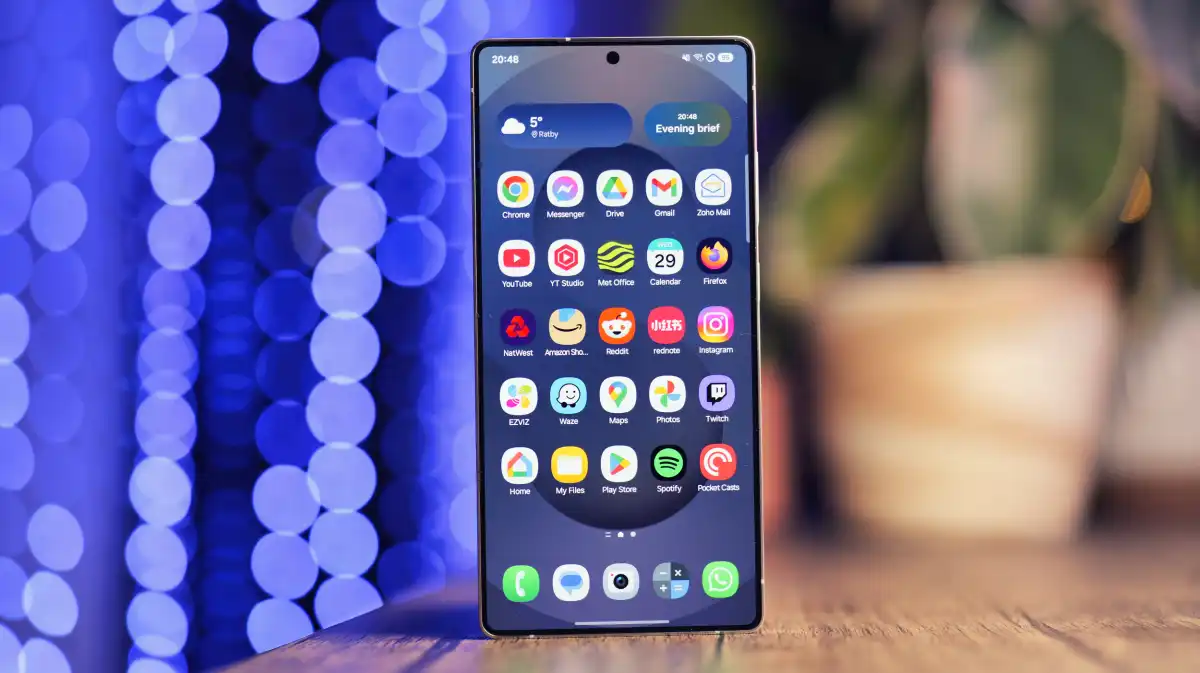
The bezels have decreased by 15%, allowing for a larger screen while keeping the chassis the same size. The camera cutout remains tiny, and the acute radius of the corners makes the display appear even larger than it is. Using it reminds me of the Redmagic 9S Pro, which I mean as a complement.
The anti-reflective glass coating was my favorite feature of the S24 Ultra’s display, and I’m glad to see a new and improved version on the S25 Ultra. It’s dubbed Corning Gorilla Armor 2, and it’s presently only available on the S25 Ultra; the S25 and S25+ are excluded.
Small upgrades are enough to make the S25 Ultra’s display my favourite of any smartphone
This new anti-reflective glass functions similarly, but with improved scratch and impact resistance, it should last longer. It’s a glossy screen, just like any other smartphone, but reflections appear duller and darker, making them less noticeable. It sounds like a tiny detail, yet it makes a big difference. Small improvements are enough to make the S25 Ultra’s display my favorite among all smartphones.
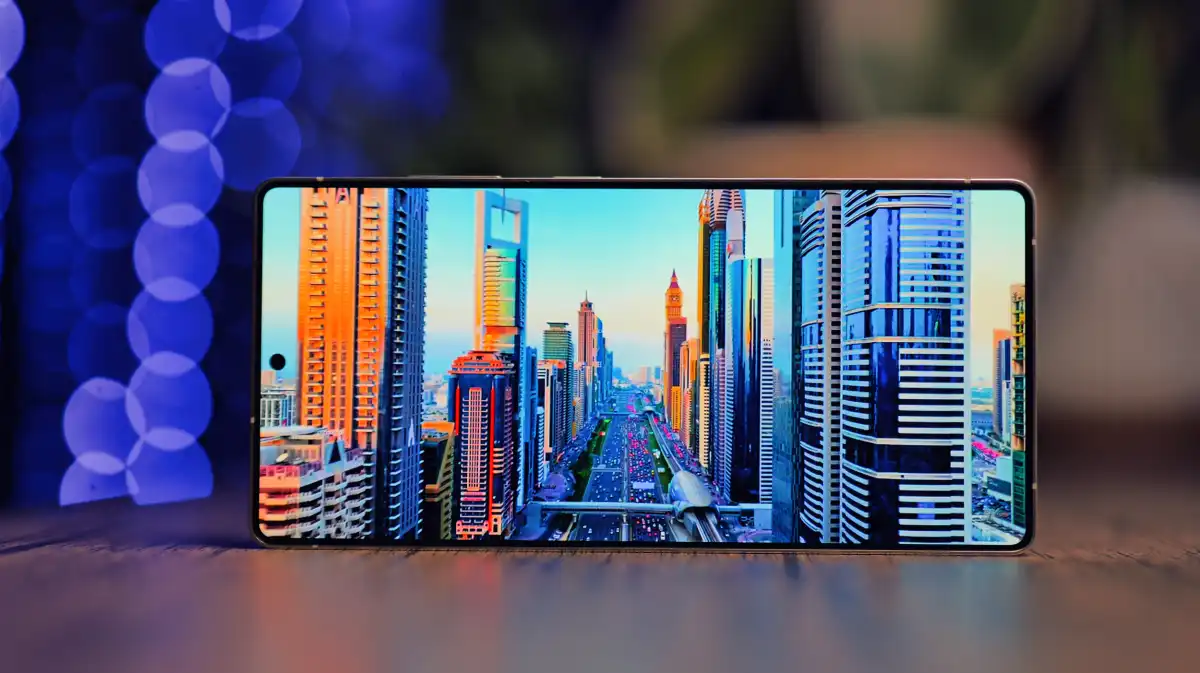
The S25 Ultra also includes a feature dubbed ProScaler, which was developed in partnership with Qualcomm. According to the source, this feature employs artificial intelligence to “boost image quality for a crisp viewing experience.” The only issue is that Samsung hasn’t been particularly clear about how or when this feature is activated, and to be honest, I haven’t observed any change.
Aside from that, you may expect the standard benefits associated with a Samsung OLED display. The colours are true and brilliant, the black levels are superb, and swiping across the OS is incredibly fluid because to the dynamic 120Hz refresh rate.
A peak brightness of 2600 nits may not sound impressive when compared to other manufacturers’ claims of up to 6000 nits, but while other marketing departments may get a little creative with the statistics, Samsung appears to be more realistic. I never had any trouble seeing it, no matter what the lighting conditions were, and the anti-reflective coating definitely helps.
The S25 Ultra has dual stereo speakers on either side of the phone, and as far as I know, they remain unchanged from the previous iteration. Again, this is not a problem because they were already among the best speakers I’d tried. There is more bass than most, a high maximum volume, and little to no distortion.

However, my main issue with the S24 Ultra speakers remains unresolved. When I hold the phone in landscape, my palm always muffles one of the speakers, which drives me crazy. I’m not sure Samsung can fix this because the S Pen, SIM card tray, and USB port are all on the same side, but expect to do some hand acrobatics while watching full-screen YouTube videos.
Specs & Performance
- Qualcomm Snapdragon 8 Elite for Galaxy
- 12GB RAM
- 256GB / 512GB / 1TB storage
The Qualcomm Snapdragon 8 Elite, Qualcomm’s flagship chip, is used on the Galaxy S25 Ultra. As with previous generations, Samsung collaborated directly with the brand to create a special souped-up version only for the S25 series. It’s simply a tiny overclock, but it should give Samsung an advantage over most other Android flagships.
This CPU is paired with 12GB of RAM, and unfortunately, rumors of a 16GB upgrade have proven false. Samsung believes it is unnecessary for the time being, and my testing suggests that they may be correct.
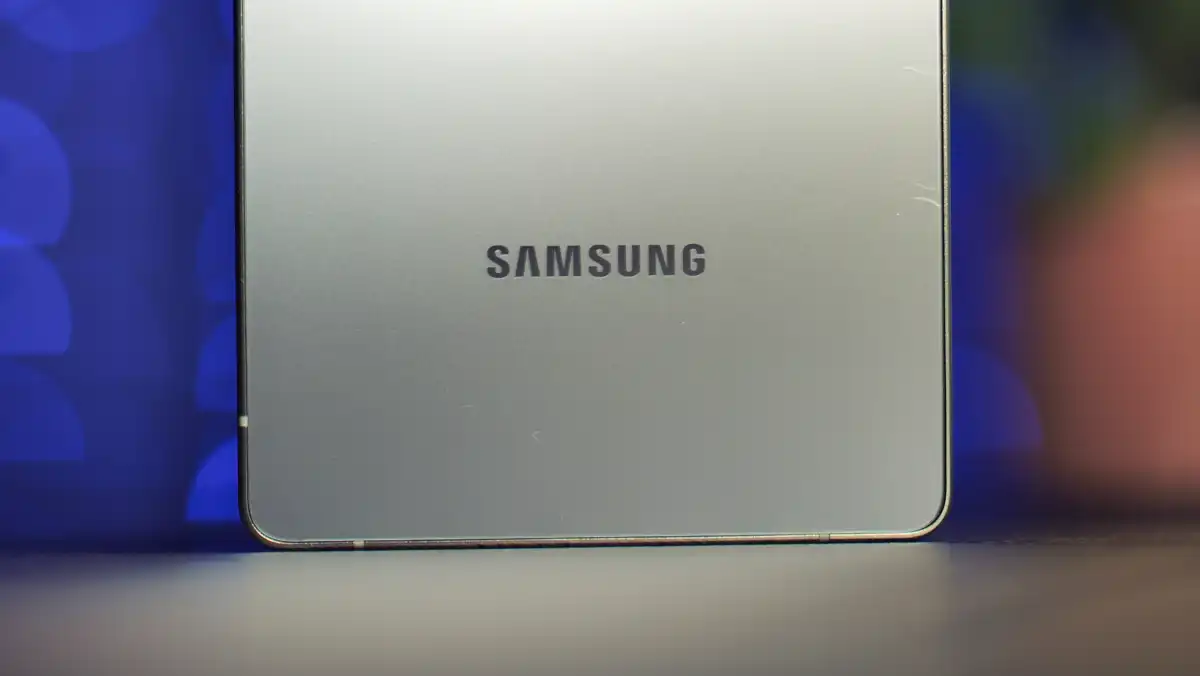
I’m sure you won’t be surprised to learn that the S25 Ultra is lightning fast; regardless of how many apps and tabs you have running in the background, this phone is a rocket. Part of this may undoubtedly be attributable to One UI 7’s quick animation style, but the raw power of the Snapdragon 8 Elite plays an equally crucial part.
No matter how many apps and tabs you have running in the background, this phone is a rocket
In benchmarks, the S25 Ultra ranks among the best devices we’ve evaluated to date. In most circumstances, it is only outperformed by the gaming-specific powerhouse, the ROG Phone 9 Pro. Of course, this translates to real-world gaming, since maxing out the settings in titles like Genshin Impact is a breeze for the S25 Ultra.
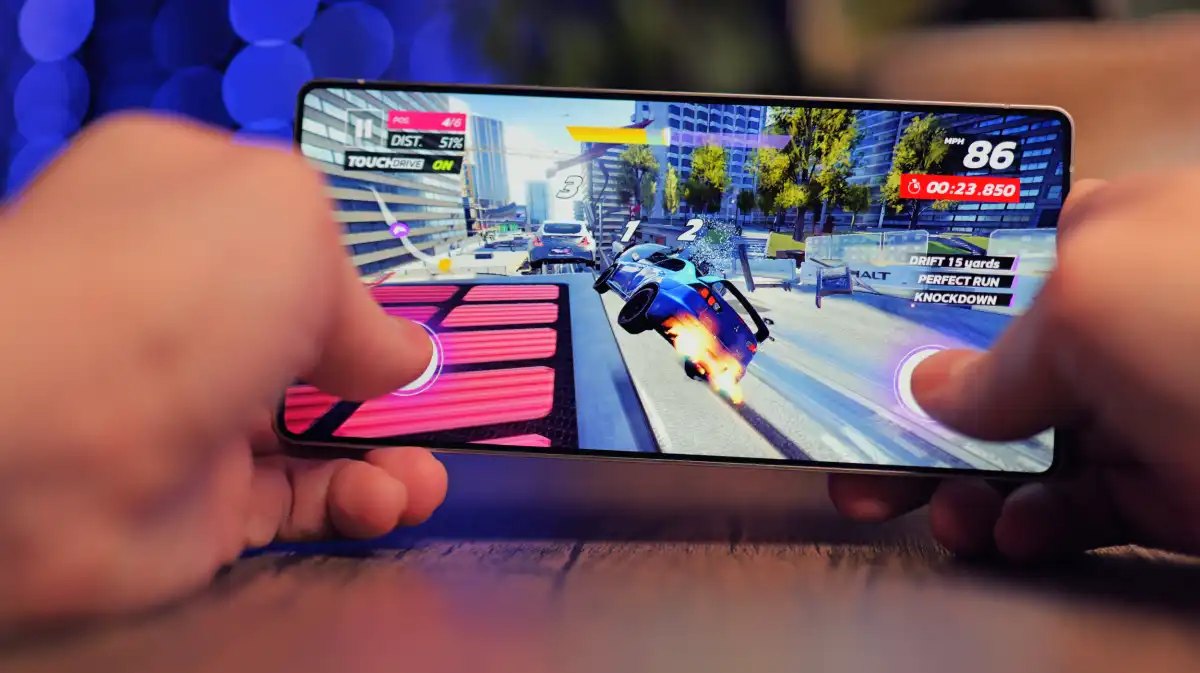
To keep this new microprocessor running at peak performance, the S25 Ultra has a 40% larger vapour chamber than its predecessor. It appears to be doing its job, as the device’s prolonged performance is extremely respectable. It is worth mentioning, however, that the frame becomes extremely heated over extended use. I discovered that the Honor Magic 7 Pro stays a little cooler in the heat of the action.
Samsung Galaxy S25 Ultra benchmarks
Cameras
- 200 Mp, f/1.7 main camera
- 50 Mp, f/1.9 ultrawide
- 10Mp, f/2.4 3x telephoto
- 50Mp f/3.4 5x telephoto
- 12Mp, f/2.2 selfie camera with PDAF
The S25 Ultra’s cameras are basically unaltered from the S24 Ultra, with the exception of the ultrawide camera, which has been upgraded. It’s the same method Apple took with the latest iPhones, and I must admit that I was unhappy to learn this.
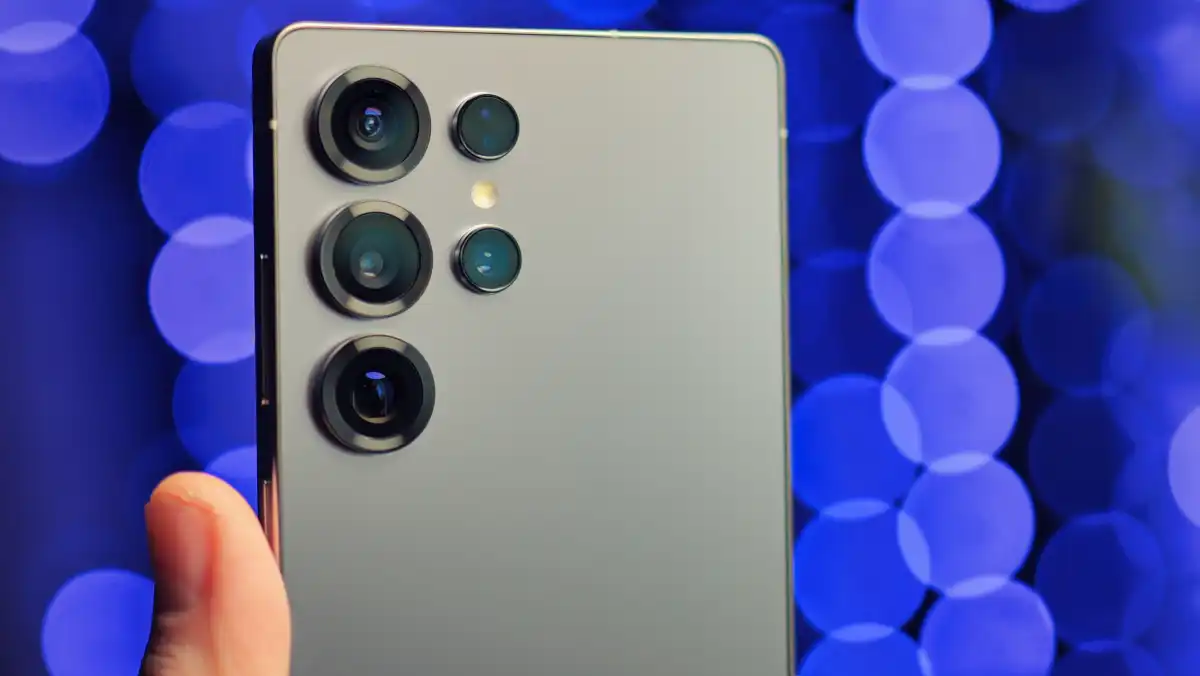
It means we’ll still have a 3x telephoto lens with a small sensor and a resolution of 10Mp, as we had since the S21 Ultra. These specifications are nearly comical in 2025, and to make matters worse, the 70mm equivalent focal length is my personal favorite. I had to keep reminding myself to take a step back and use the far superior 5x telephoto.
Aside from hardware issues, the Samsung Galaxy S25 Ultra continues to produce outstanding images, which appear to be better than ever. Samsung’s speech mentioned a new Spatio Temporal Filter and the ProVisual Engine, which were co-engineered with Qualcomm. I’m not going to pretend to understand how these work, but they make images and videos look marginally better than the previous generation.

The primary thing I observed was that colour accuracy appears to have improved, with skin tones seeming much more realistic and lifelike. Shots appear slightly more detailed than in the S24 series, but not oversharpened. It’s not a huge upgrade, but it improves on an already excellent camera setup.
Colour accuracy seems to have improved, and in particular, skin tones look much more natural and life-like
However, one issue remains unresolved: noise. The main camera does reasonably well in low-light circumstances, but the additional sensors, particularly the 3x telephoto, struggle. The exposure and colors look nice, and the details are all there, but the photographs are far grainier than most of the competitors.
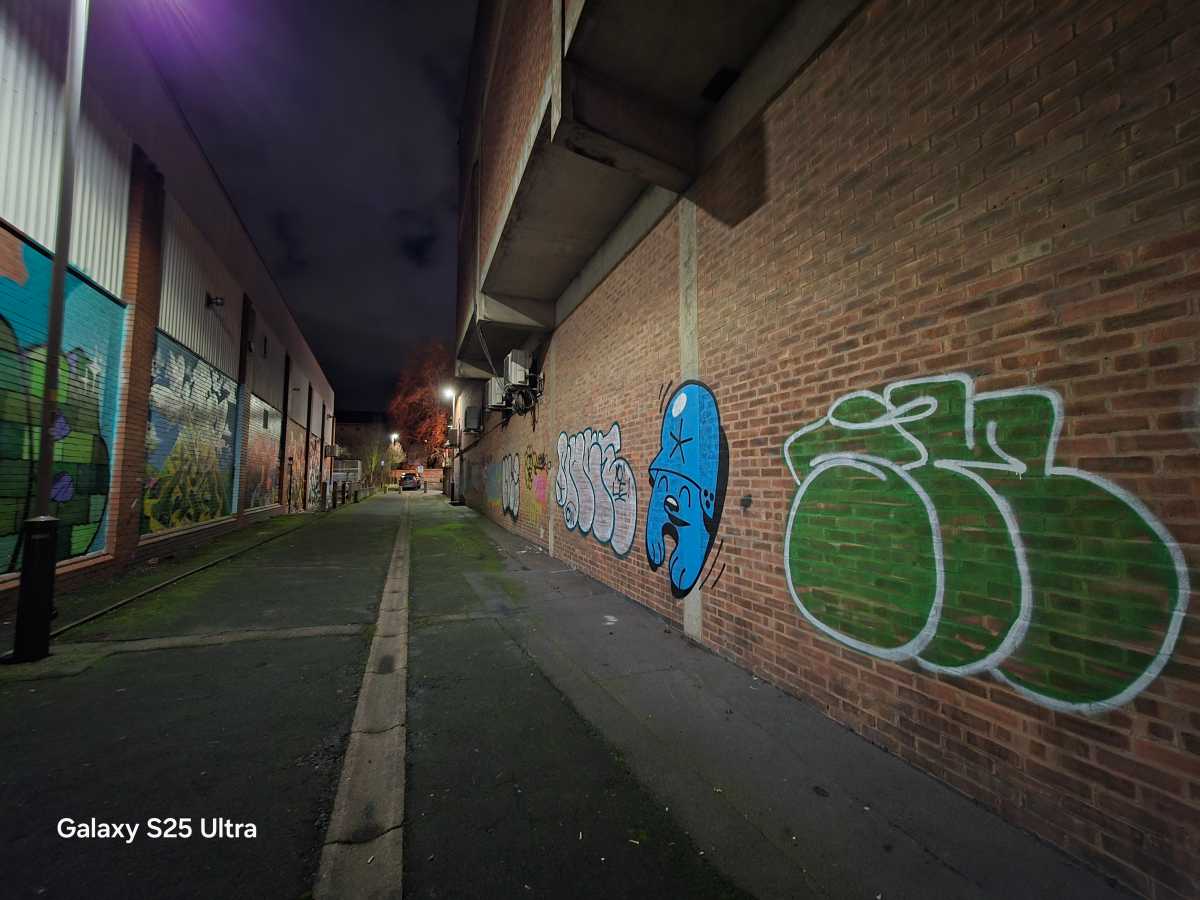
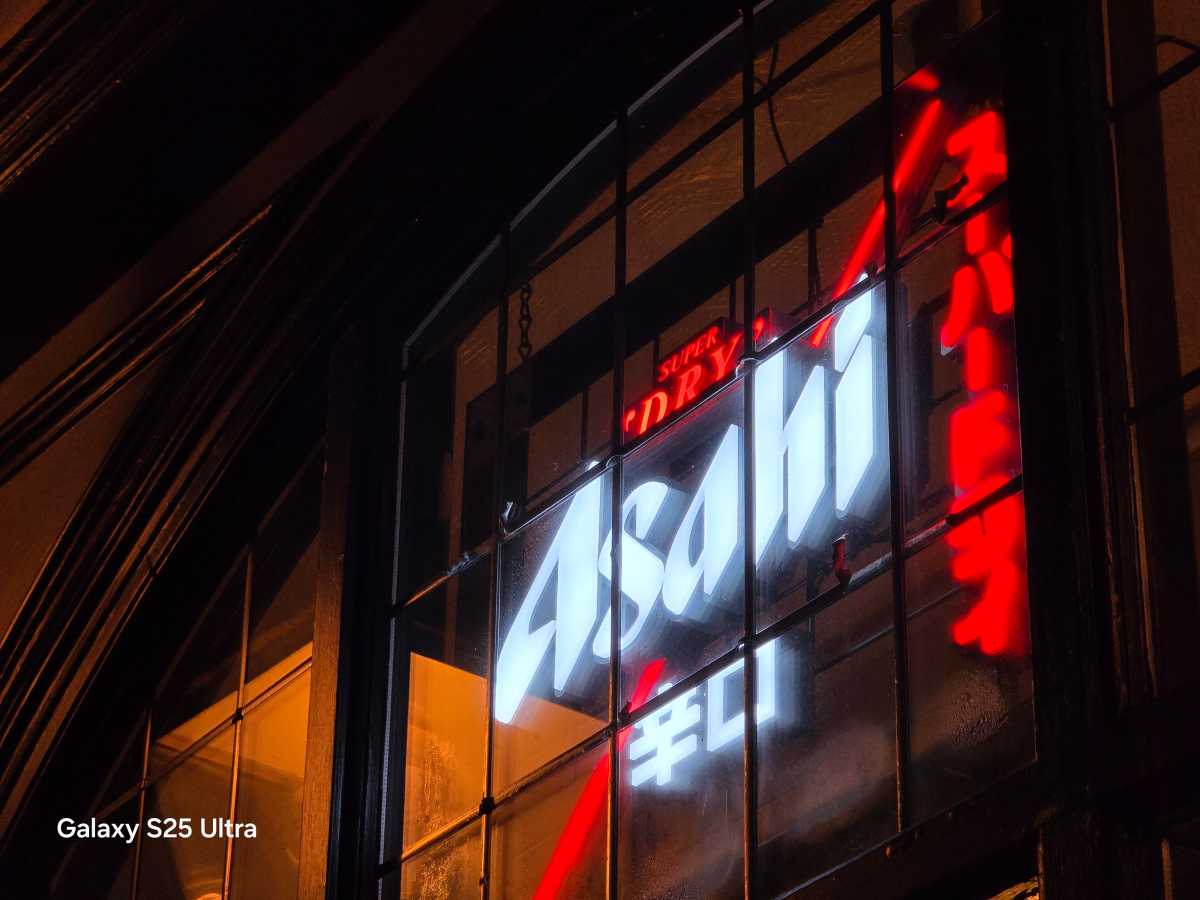



The new ultrawide camera is an upgrade, but hardly a game changer. When you zoom in, you can expect to see slightly more information, but the change won’t be noticeable at first glance. Of course, when you select the high-resolution photo mode, this becomes even more true.
One of the most significant changes for video shooting is the inclusion of a Log recording mode in the default camera app. This means you can record with a very flat image profile and then edit the clip in your choice video editor.
Apple debuted a Log profile with the iPhone 15-series, and it has since appeared on competing Android handsets like as Honor and Vivo. Previously, Samsung did not provide such an option, and the update should make this phone more appealing to professional videographers. It is also, as far as I know, the only phone that supports Log video recording in 8K resolution.
I’m not a skilled colourist, so it’s difficult to say how excellent this Log profile is. However, based on my limited experience, it appears to capture more shadow detail than the default image profile and can handle grading much better, which is exactly what a Log profile should accomplish. If you’re comparing choices, it’s unlikely to outperform Apple’s offering because there is no ProRes-equivalent codec, only a rather lossy HEVC option.
Battery Life & Charging
- 5000 mAh battery
- 45W wired charging
- 15W wireless charging
The Galaxy S25 Ultra shares the same battery capacity and charging parameters as its predecessor. It’s sad to see Samsung sitting on its laurels while competitor firms are introducing so many new battery advances. However, Samsung promises that thanks to additional optimizations, the S25 Ultra will last almost an hour longer during video playback than the S24 Ultra.
In truth, the S25 Ultra’s battery lasts far longer than most people expect, and I frequently went to bed with 30-40% of the tank still full. It is not a two-day gadget unless you use your phone carefully, but it requires a lot of screen-on time to empty it before the end of the day.

45W wired charging seems quite underwhelming, especially when competing manufacturers exceed 100W, yet it’s still quite quick. I was pleasantly surprised to see that it can go from completely flat to approximately 70% charged in under half an hour. The remaining 30% takes exactly as long, and a complete charge took me little over an hour.
I was pleasantly surprised to see that it can go from fully flat to around 70% charged in just half an hour
As usual, there’s no charger in the box, just a USB-C to USB-C cable, so you’ll want to ensure you have a suitably quick wall adapter to benefit from the full 45W.
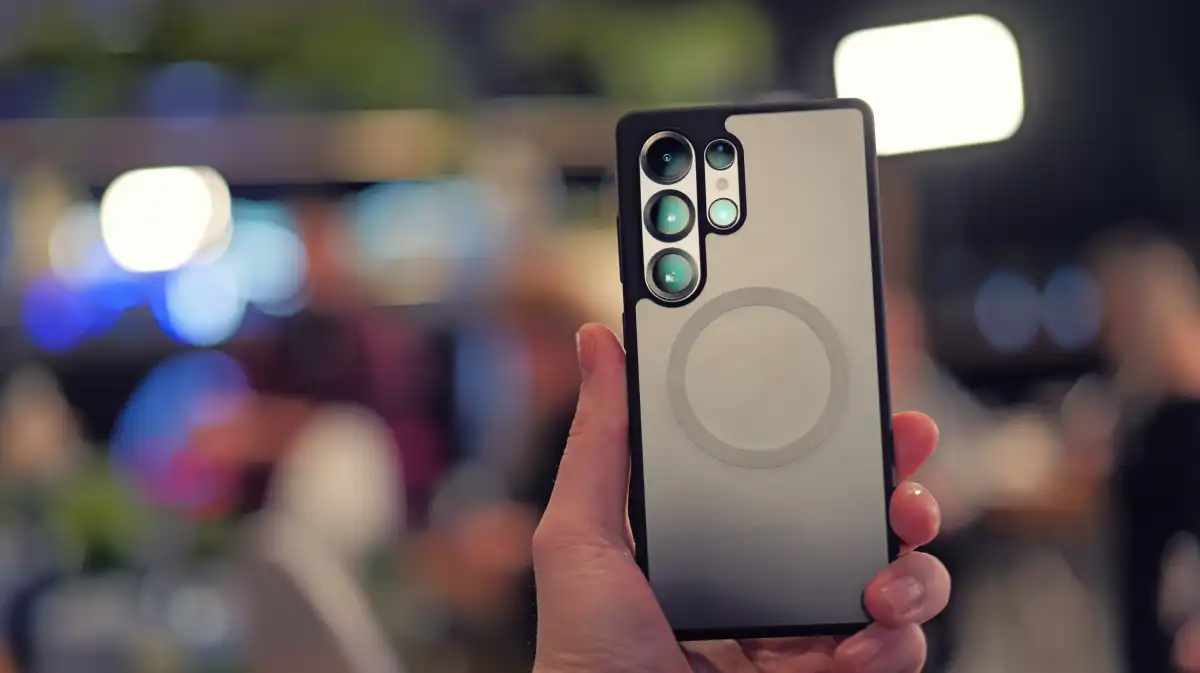
When it comes to wireless charging, the Samsung S25-series has theoretically been upgraded to Qi2.1, but it’s not as spectacular as it appears. Really, all it means is that Samsung offers official cases with magnets that can be used with Qi2 wireless chargers.
The charging rate remains a dismal 15W. It’s quite lackluster, especially after trying the Honor Magic 7 Pro, which supports up to 80W wireless charging speeds.
Software & Apps
- One UI 7, based on Android 15
- New Galaxy AI features
- Enhanced Circle to Search and Gemini
Samsung’s keynote for the S25 series, like the one for the S24 series, focused nearly entirely on software enhancements and artificial intelligence.
One UI 7 has undergone a rather extensive redesign. It has a slick new design, and AI elements are now integrated into every aspect of the operating system.
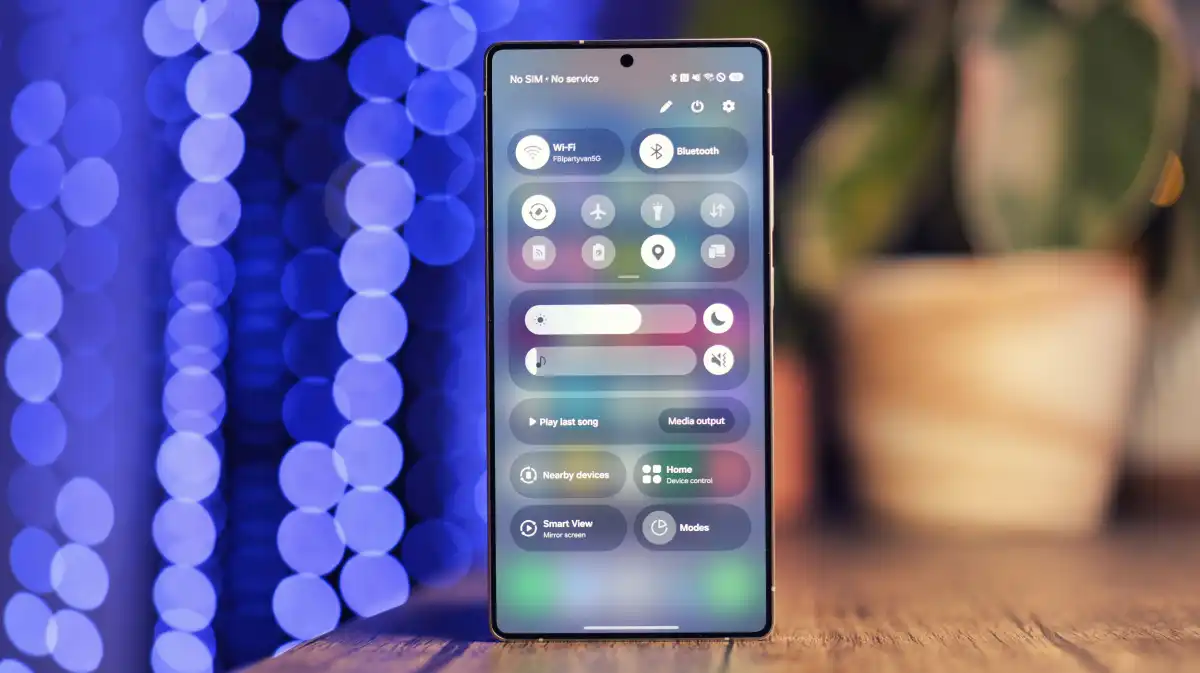
Beginning with the basics, One UI feels faster than ever, with smooth and snappy animations that outperform most Android competitors. There is a lot of flexibility available, so you can quickly modify the OS to look and behave the way you want. Fundamentally, it is simply incredibly comfortable to use.
Of course, you get all of the same AI functions as the previous generation, plus a lot more. One of the major changes is that a long press of the power button now launches Gemini rather than Google Assistant or Bixby. However, it is not the Gemini we are accustomed to; it has been granted additional skills.
This new voice assistant behaves primarily like Gemini on any other phone, but it can also connect with other apps and phone features. It can add an event to your Samsung Calendar, for example, something Gemini cannot do. It’s already quite useful, far superior to Bixby, and I’m confident it will become even more useful as time passes.

The search bar in the app drawer and settings menu are now also AI-powered. It still performs the same function, but you can now ask for items in normal language rather than typing keywords and exact phrases. For example, you can now say “I want to make my screen brighter” instead of entering “brightness”. It will make discovering things lot easier for less tech-savvy users, but if you already know what you’re searching for, there will be no significant change.
One UI feels faster than ever, with slick and snappy animations that outclass most Android rivals
Another new AI function is called Now Brief, and by default, a Now Brief widget will appear on your home screen. This feature provides a summary of critical events and information from throughout your phone, which appears in your notifications in the morning, afternoon, and evening.
I was excited to test this, but I quickly realized that you have to be completely involved in the Samsung ecosystem to get the most out of it. As someone who utilizes Google services for almost everything, the Now Brief just provided me with the weather forecast and a list of events on my calendar, which was neither useless nor very intriguing.

If you use Samsung accessories such as the Galaxy Watch or Ring, as well as Samsung’s internet browser, you’ll learn a lot more in this briefing. I’ve seen other users’ briefings full with sleep and activity statistics, as well as news recommendations, and mine seemed rather sparse in comparison. I think there’s potential here; I just wish it worked well with a few more Google services.
The select tool has also seen an AI overhaul, and there is now some overlap with Circle to Search (which is also available on this phone). The choose tool can be used to copy text from a picture, search for reverse images, translate images, and so on. Where it differs is that you may design items from your choices. You may now create images in a variety of artistic styles, remove things, and even use Sketch to Image to add your own AI twist.
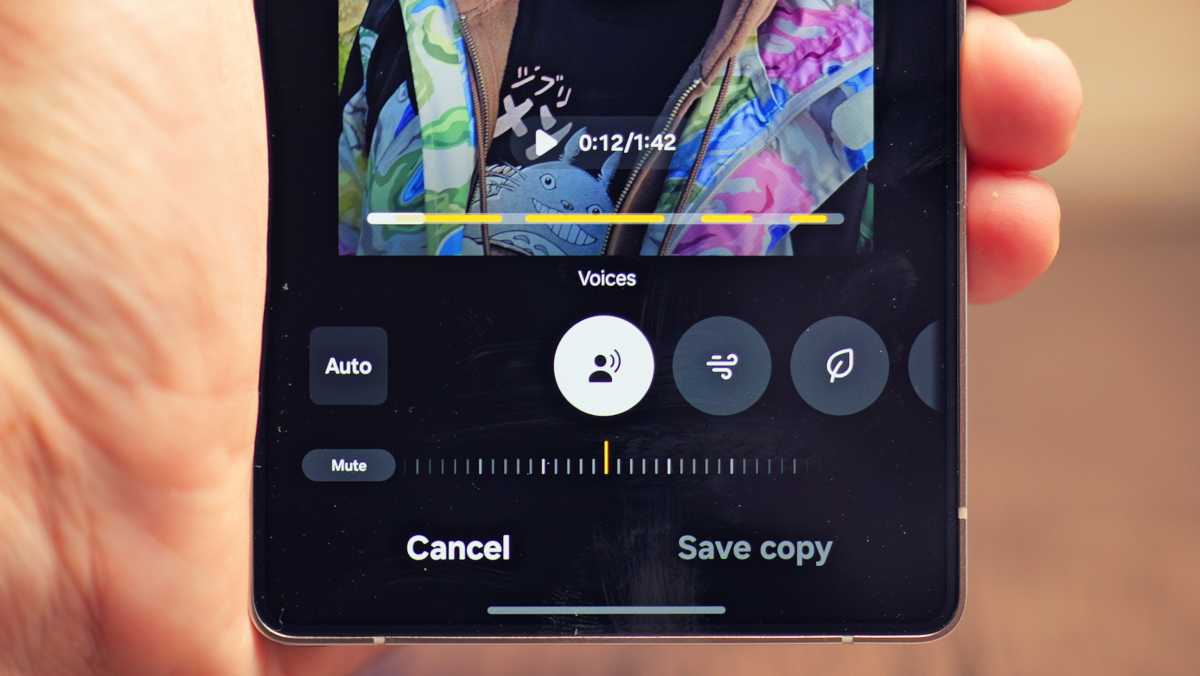
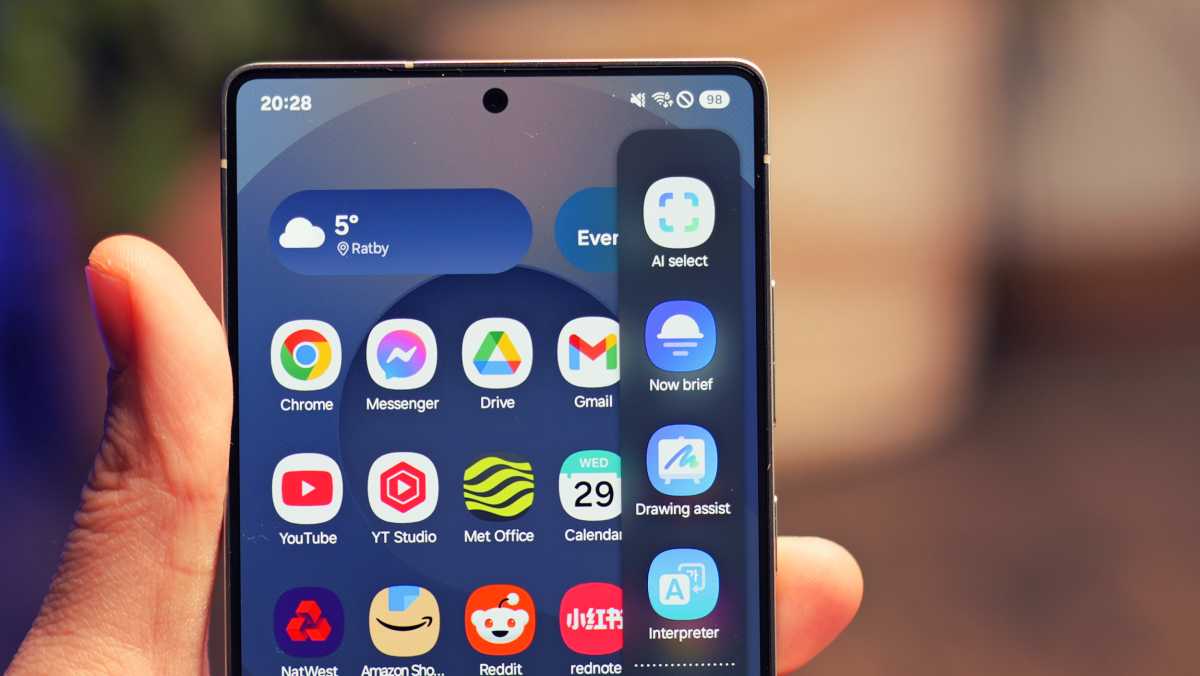
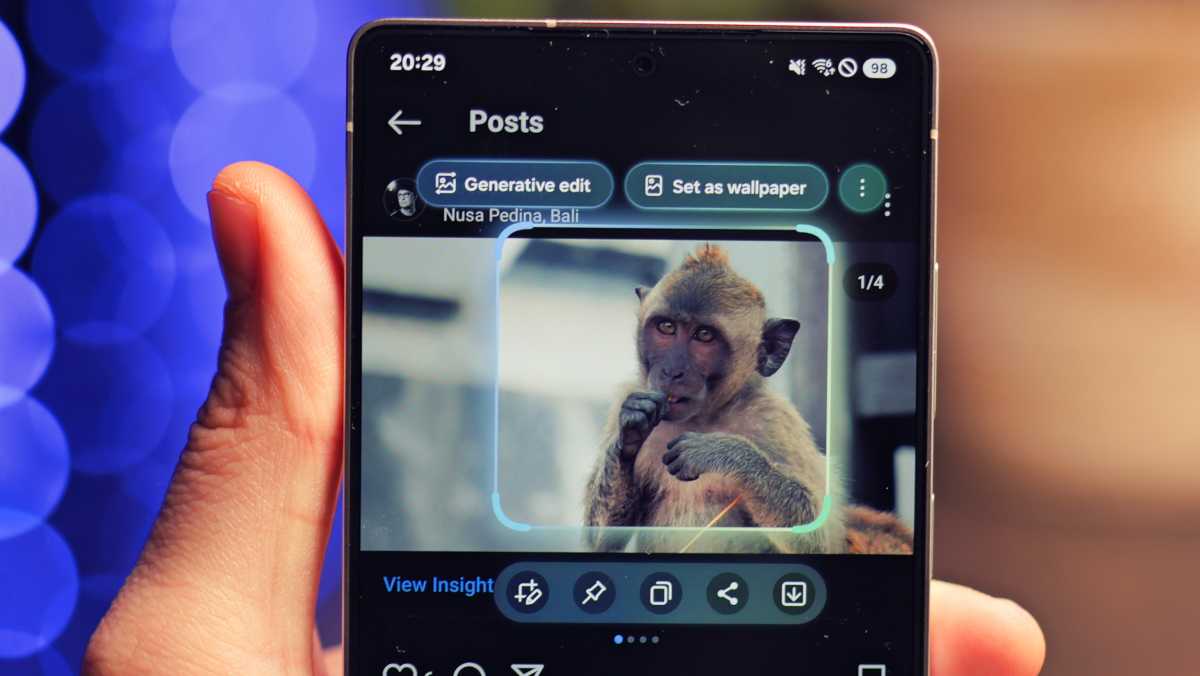
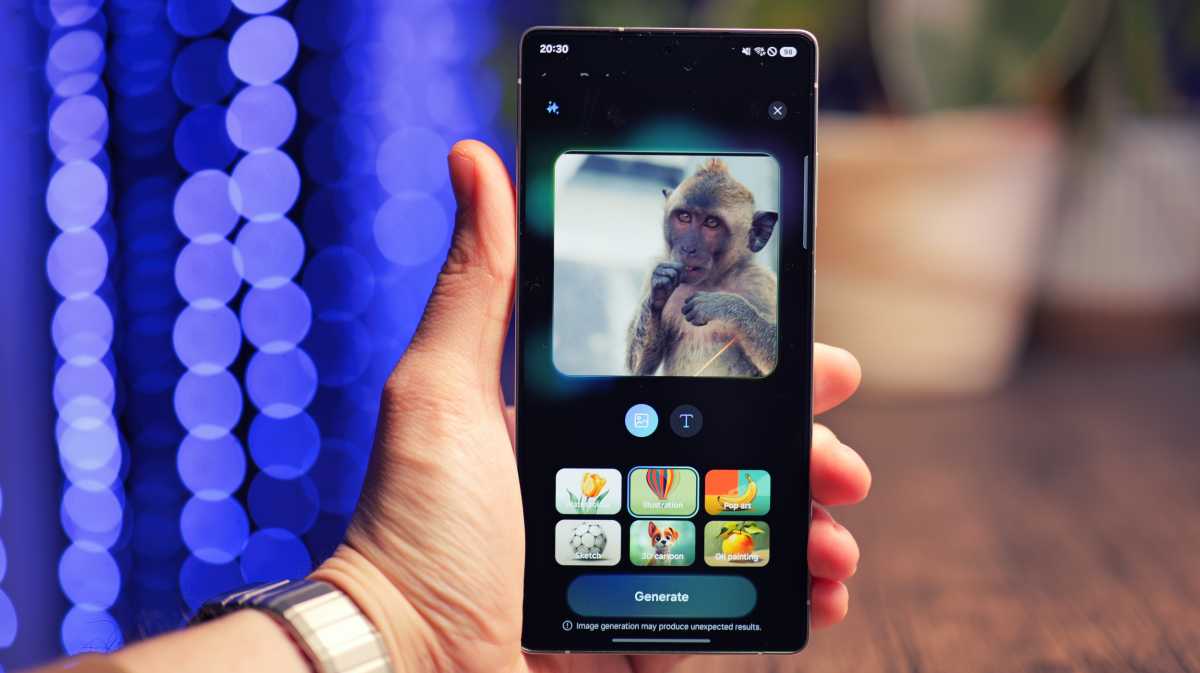
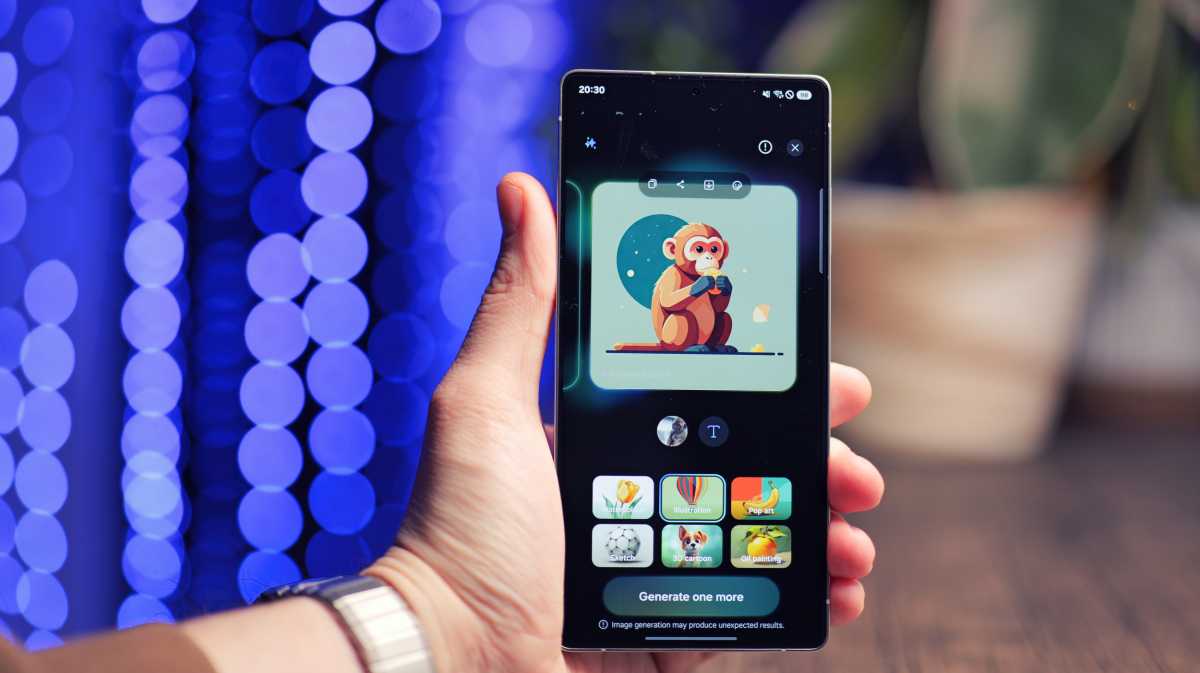
The new AI audio eraser, which works similarly to the one on the iPhone 16 series and the most recent Pixel phones, is another significant addition. It allows you to take a video clip filmed in a noisy environment and make your voice much clearer while dialing down the background sounds. The technology is very clever, but the results always sound a little unnatural to me, so it’s best reserved for situations where the footage would otherwise be unusable.
In terms of updates, Samsung is still committing to a class-leading seven years of both OS and security updates.
Price & Availability
The Samsung Galaxy S25 Ultra is available to pre-order in most regions globally, and units begin shipping to customers from 1 February 2025. The 256GB model costs £1,249/$1,299, the 512GB version is £1,349/$1,419 and the 1TB model will set you back £1,549/$1,659.
On the Samsung UK and Samsung US sites, there are also some appealing pre-order offers available.


